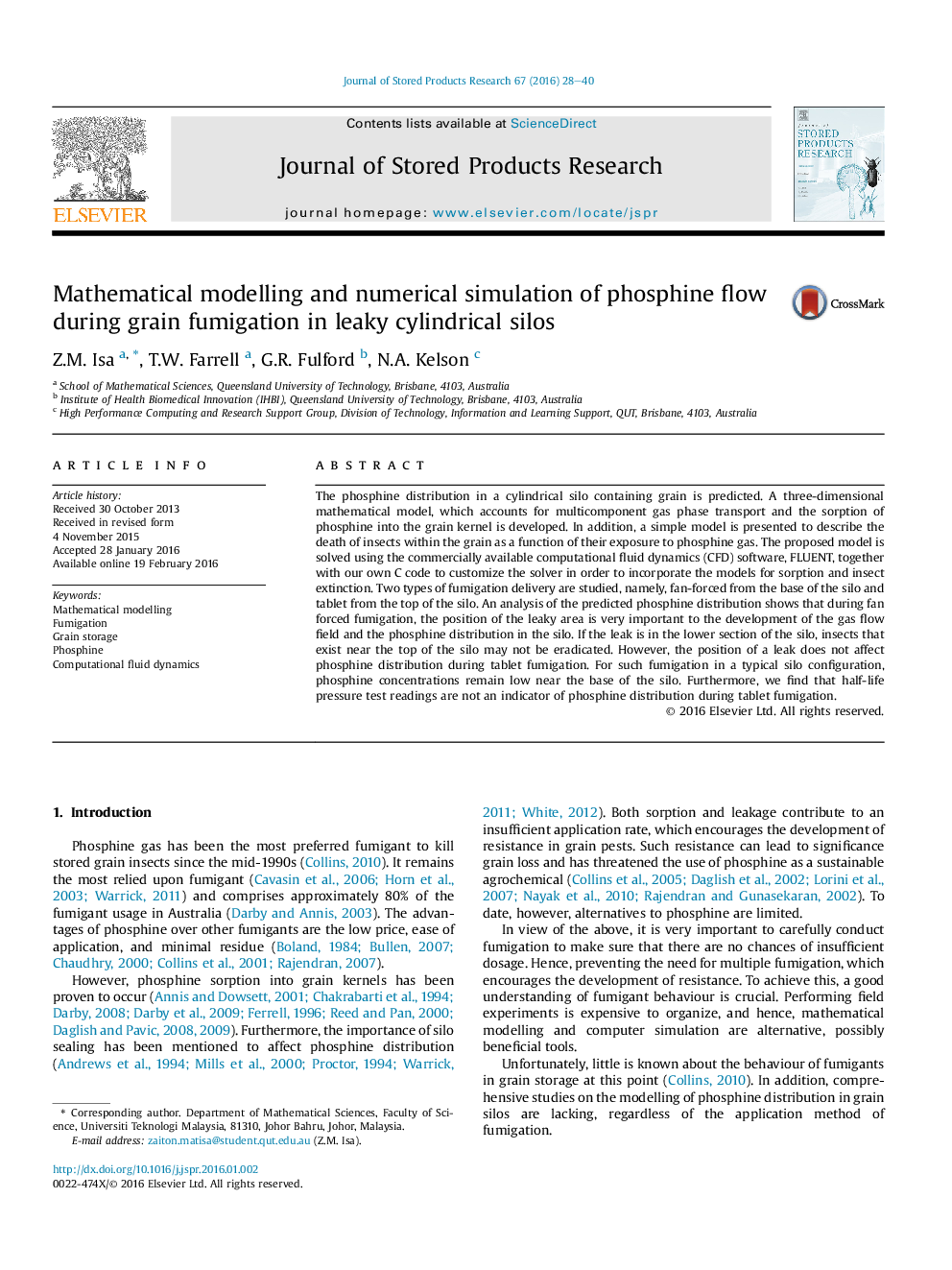| Article ID | Journal | Published Year | Pages | File Type |
|---|---|---|---|---|
| 4516961 | Journal of Stored Products Research | 2016 | 13 Pages |
•Mathematical models can be used to predict fumigant distribution in leaky silos.•Leaks can significantly effect fumigant distribution in fan-forced fumigation.•Leaks can have less effect on fumigant distribution in tablet fumigation.•The HLP is not a good indicator of resulting fumigant distribution for tablet fumigation.
The phosphine distribution in a cylindrical silo containing grain is predicted. A three-dimensional mathematical model, which accounts for multicomponent gas phase transport and the sorption of phosphine into the grain kernel is developed. In addition, a simple model is presented to describe the death of insects within the grain as a function of their exposure to phosphine gas. The proposed model is solved using the commercially available computational fluid dynamics (CFD) software, FLUENT, together with our own C code to customize the solver in order to incorporate the models for sorption and insect extinction. Two types of fumigation delivery are studied, namely, fan-forced from the base of the silo and tablet from the top of the silo. An analysis of the predicted phosphine distribution shows that during fan forced fumigation, the position of the leaky area is very important to the development of the gas flow field and the phosphine distribution in the silo. If the leak is in the lower section of the silo, insects that exist near the top of the silo may not be eradicated. However, the position of a leak does not affect phosphine distribution during tablet fumigation. For such fumigation in a typical silo configuration, phosphine concentrations remain low near the base of the silo. Furthermore, we find that half-life pressure test readings are not an indicator of phosphine distribution during tablet fumigation.
